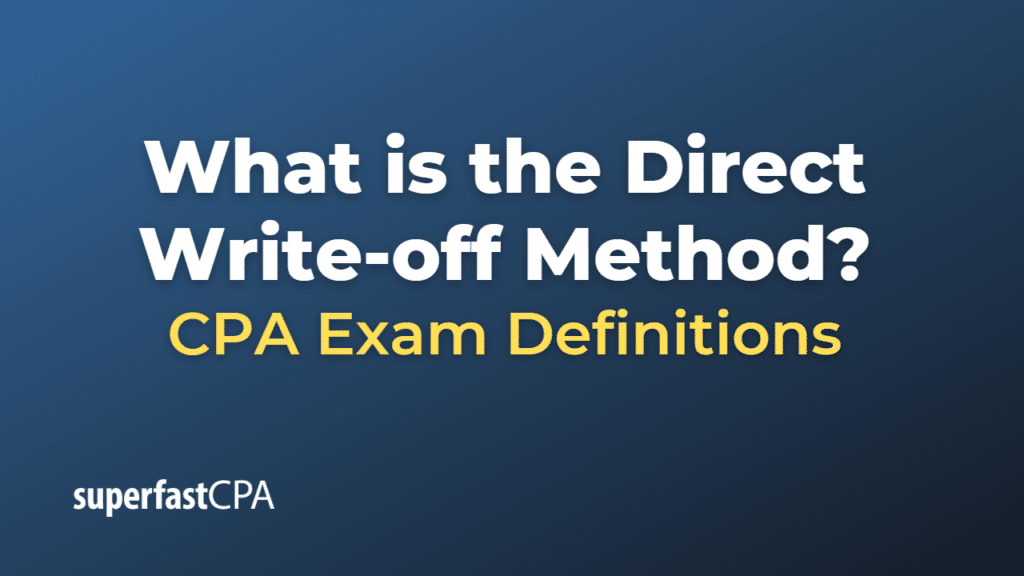Direct Write-off Method
The direct write-off method is an accounting approach used to deal with bad debts – amounts that a company cannot collect from its customers. Under this method, an uncollectable account receivable is written off directly as an expense at the point when a company determines it to be uncollectible.
For instance, if a customer purchased goods on credit and then failed to pay the invoice, the company might eventually decide that the debt is uncollectable. At this point, the company would use the direct write-off method to remove the amount of the uncollectable invoice from its accounts receivable and record it as a bad debt expense.
Here’s how it would look in journal entries:
- Debit (increase) Bad Debt Expense
- Credit (decrease) Accounts Receivable
It’s important to note that the direct write-off method does not conform to the matching principle of accounting, which states that expenses should be recognized in the same period as the revenues they helped to generate. Because of this, the direct write-off method is not acceptable for financial reporting purposes under generally accepted accounting principles (GAAP) in the United States, though it may still be used for tax purposes.
Instead, for financial reporting, most companies use the allowance method, which involves estimating bad debts in the same accounting period in which the sales occurred, thus better aligning with the matching principle.
Example of the Direct Write-off Method
Company XYZ sold products worth $1,000 on credit to Customer A. However, after several months, Customer A declares bankruptcy and cannot pay their outstanding invoice. Company XYZ determines this debt to be uncollectible.
Using the direct write-off method, Company XYZ would make the following journal entry:
- Debit Bad Debt Expense: $1,000
- Credit Accounts Receivable – Customer A: $1,000
This entry records the bad debt as an expense and reduces the accounts receivable balance, indicating that Company XYZ no longer expects to receive payment from Customer A.
While this method is simple and straightforward, it has the drawback of potentially distorting the company’s financial picture. The sale (and related accounts receivable) may have been recorded in one accounting period, and the bad debt expense may be recorded in a different period, violating the matching principle of accounting. This is why many companies prefer to use the allowance method, which attempts to estimate and match bad debt expense to the period in which the sales were made.












